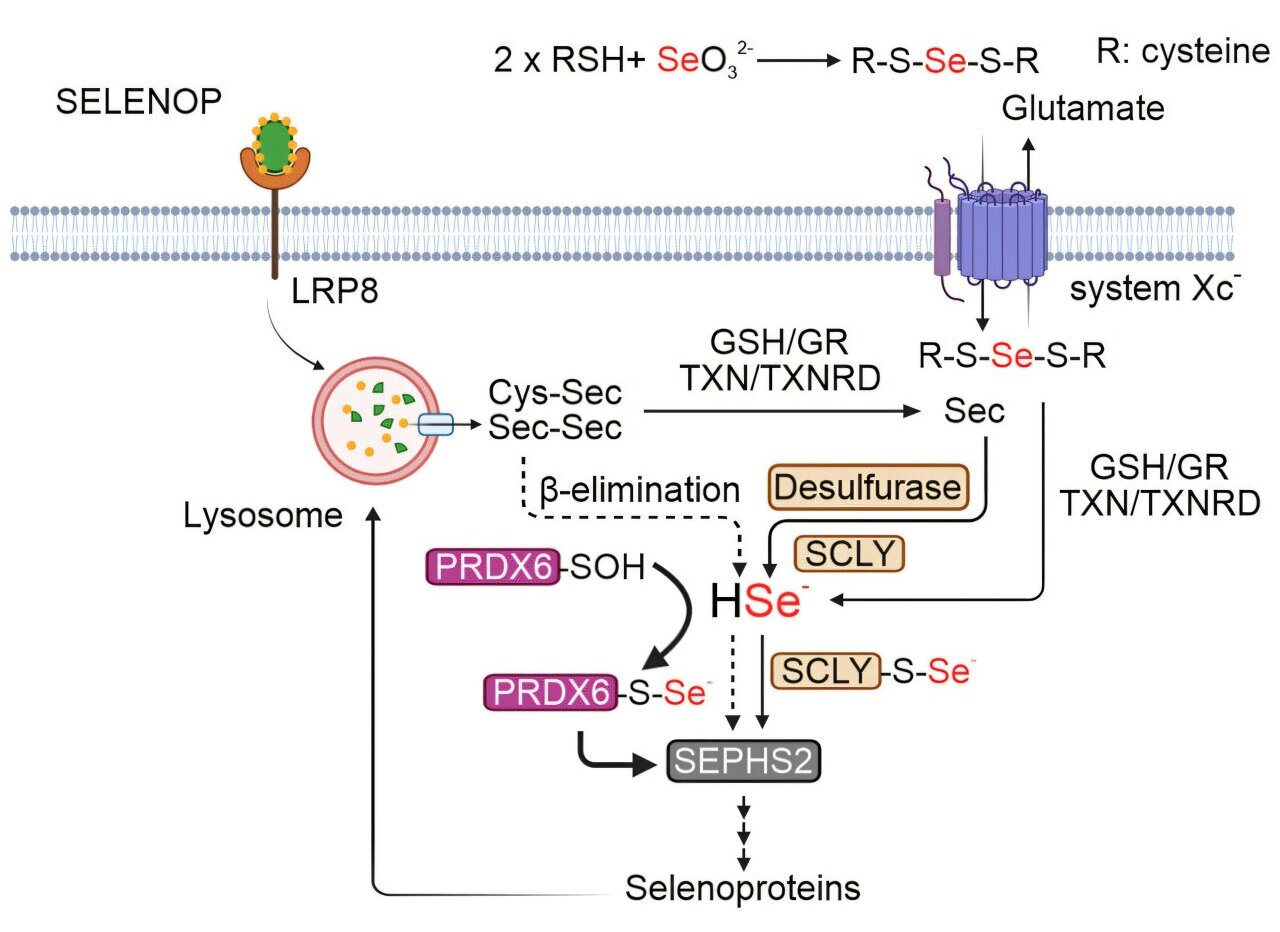Selenoproteins are crucial for several biological functions, including the breakdown of harmful substances, immune system support, and regulating metabolic processes. However, in specific contexts, these proteins can be misused and shield cancer cells from death. One such protein, glutathione peroxidase 4 (GPX4), is vital in supporting cellular protection and cancer cell survival.
“This protective property of GPX4 creates a significant challenge for standard cancer therapies, as its activity has been shown to promote survival of drug-tolerant states,” says Professor Pedro Friedmann Angeli, chair of Translational Cell Biology at the University of Würzburg (JMU), Germany.
“But if we can inhibit GPX4 production, we may be able to target and destroy cancer cells. This is particularly promising for treating neuroblastoma, which primarily affects children.”
Together with researchers from the Heidelberg Institute for Stem Cell Technology and Experimental Medicine led by junior group leader Hamed Alborzinia, Friedmann Angeli’s team is therefore focusing on research into the inhibition of enzymes that promote selenocysteine insertion into selenoproteins.
The paper is published in the journal Molecular Cell.
“Until now, we only knew of one enzyme, selenocysteine lyase (SCLY), which was responsible for releasing the selenium atom from selenocysteine,” explains Zhiy Chen, a Ph.D. student in Friedmann Angeli’s team and first author of the study.
“Our research has now identified an unforeseen pathway that requires the enzyme, peroxiredoxin 6 (PRDX6), which can sustain selenoprotein production without SCLY.”
Through cutting-edge techniques such as mass spectrometry and CRISPR-Cas9-based functional genomics, the research team discovered that PRDX6 binds directly to selenium and acts as a transporter, or “shuttle,” for the trace element, enabling the production of new selenoproteins. The study also demonstrated that inhibiting PRDX6 could impair cancer cell survival, especially in neuroblastomas, offering a new potential therapeutic target.
Interestingly, the team found that although PRDX6 can compensate for the absence of SCLY, it lacks the specific activity present in SCLY required to remove the selenium atom from its precursors. Friedmann Angeli’s group aims to investigate which other proteins collaborate with PRDX6 to maintain selenium protein synthesis. Additionally, the development of molecular inhibitors targeting both SCLY and PRDX6 is on the horizon, aiming to better hinder cancer cell growth.
The study was collaborative, involving partners from the University of São Paulo in Brazil, the Institute of Stem Cell Technology and Experimental Medicine in Heidelberg, and the German Cancer Research Center (DKFZ).
More information:
Zhiyi Chen et al, PRDX6 contributes to selenocysteine metabolism and ferroptosis resistance, Molecular Cell (2024). DOI: 10.1016/j.molcel.2024.10.027
Provided by
University of Würzburg
Citation:
Selenoproteins open new strategies for treating certain cancers in children (2024, November 16)
retrieved 16 November 2024
from https://phys.org/news/2024-11-selenoproteins-strategies-cancers-children.html
This document is subject to copyright. Apart from any fair dealing for the purpose of private study or research, no
part may be reproduced without the written permission. The content is provided for information purposes only.


